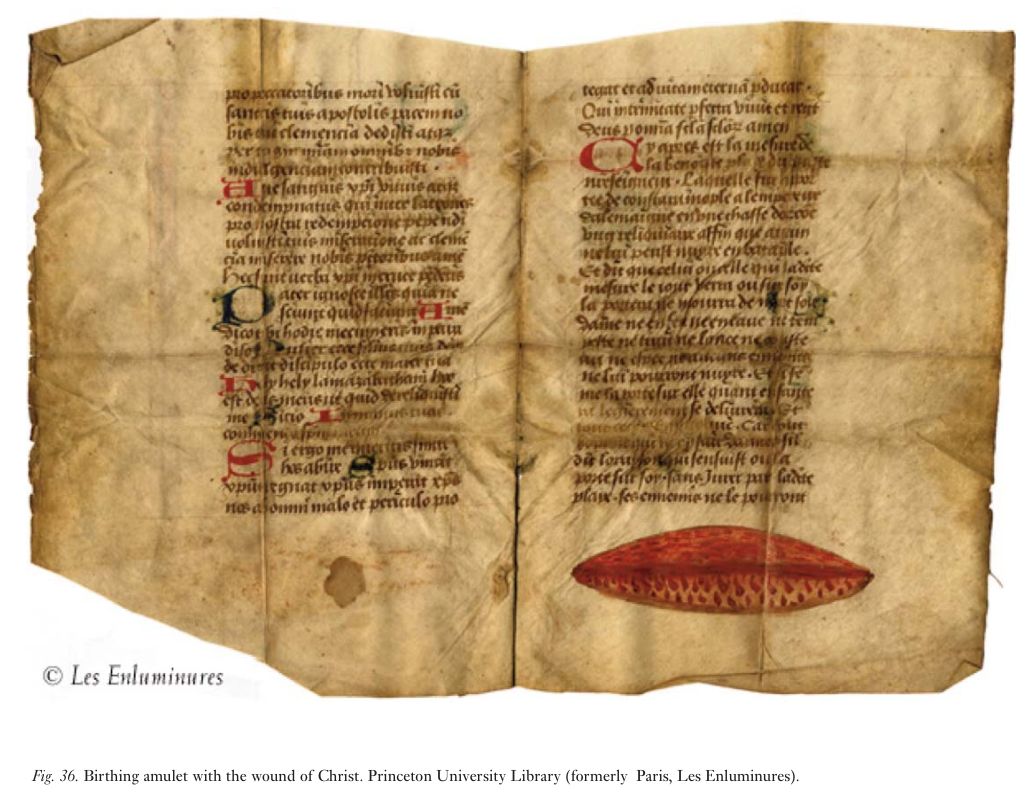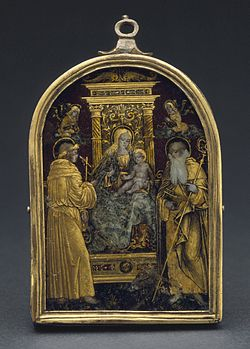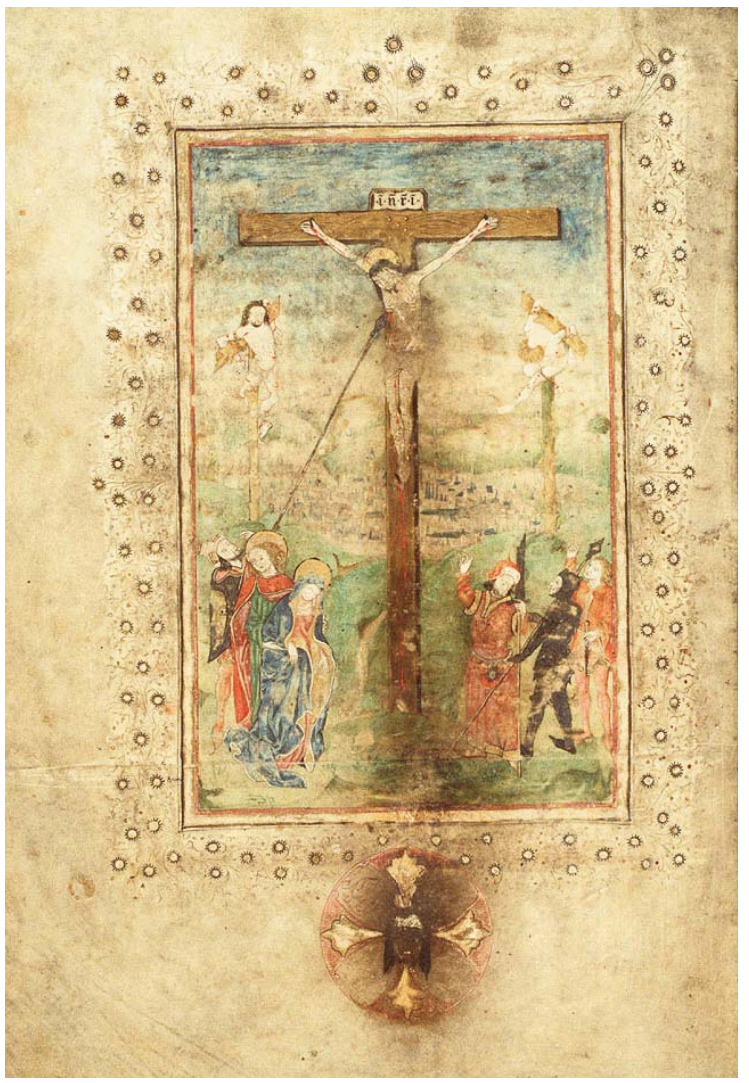created 2025-05-14, & modified, =this.modified
rel: Kissing - The Art of Osculation Considered by George J Manson
NOTE
In Lapiz Lazuli I was reading about this phenomenon of ritual osculation. The work cited referenced this paper.
Christianity as practised in the late Middle Ages demanded physical rituals.
Manuscripts in particular often hold signs of wear, including dirt, fingerprints, smudges, and needle holes, which index some of the physical rituals they have witnessed.
The physical relationship with the book, was because the worshippers used the book as a proxy for the body of Christ.
Like ingesting the host, the ritual continued to be oral, since the priest first kissed the pax before passing it to the congregants, who then kissed it to receive the kiss that had been spiritually deposited there.
Pax
Pax (Liturgical Object)
The Pax was a liturgical object used in the Middle Ages and Renaissance for the kiss of peace in Catholic Mass. Direct kissing was replaced by each in turn kissing the pax, which was carried around.
Often the pax was held out with a long handle attached, and it seems to have been given a wipe with a cloth between each person.
Believers understood that priests tapped into the power of Christ by repeating his words at the Last Supper: they uttered words that effected a change, just as priests uttered ‘hoc est corpus meum’ in order to turn the bread of the host into the body of Christ.
Devotional books use, both added and subtracted materials. Marginalia appears, and the binding functioned as a “lid of a treasure chest” with birth/death dates, extra prayers and small images.
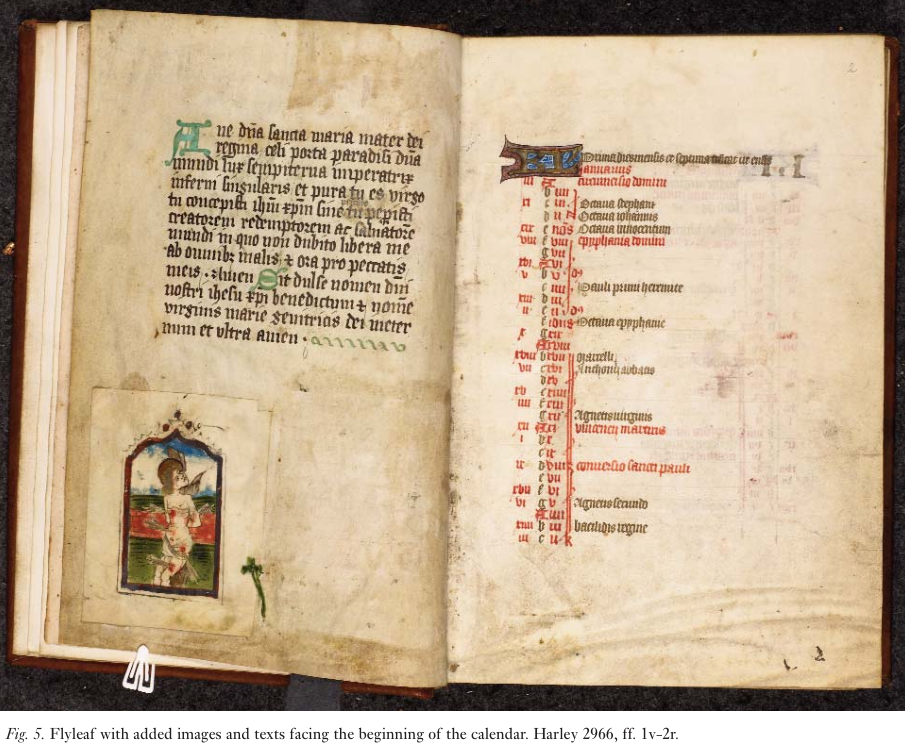 St. Sebastian was said to be efficacious against plague and other serious illness and invoking him may have had the same effect as invoking through prayer.
St. Sebastian was said to be efficacious against plague and other serious illness and invoking him may have had the same effect as invoking through prayer.
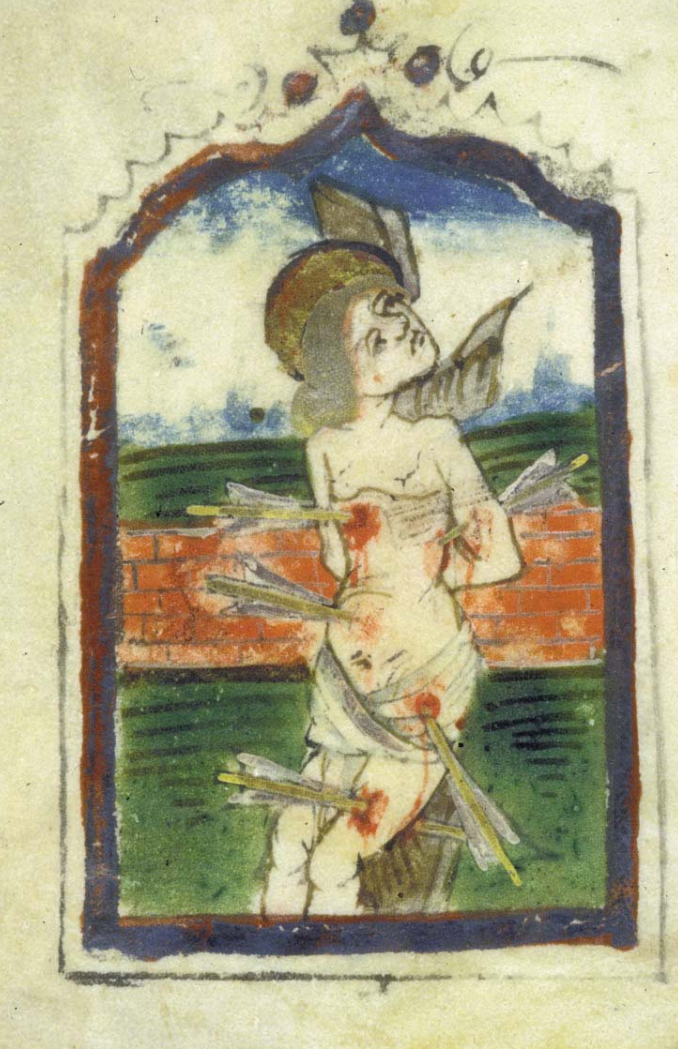
Item, anyone who speaks this prayer written below on an empty stomach every morning three times in front of the image of Our Dear Lady, along with one Ave Maria, will not die of the plague during the day.
The series of holes above the miniatures explains the reason for this discoloration: the votary sewed curtains to the book, thereby creating a row of needle holes. These curtains, which have since been removed, must have covered only the images and stopped short of the rubricated text below the frame.
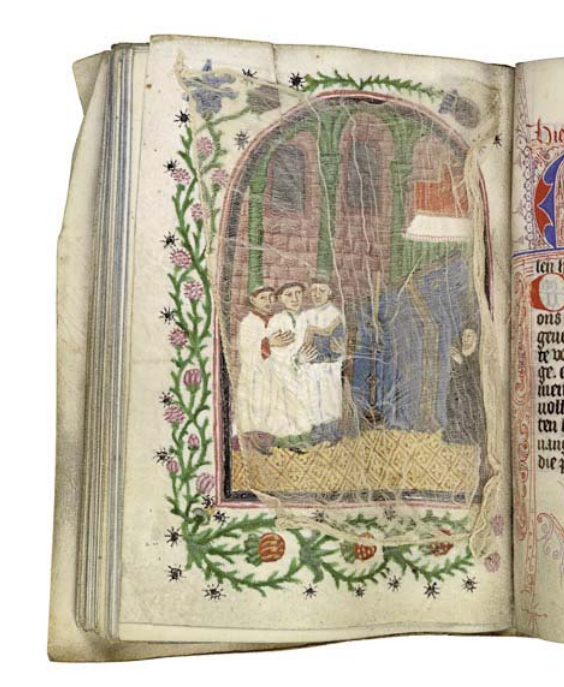
Rubication
Rubication is the addition of red ink to manuscripts for emphasis.
Rubrication was used so often in this regard that the term rubric was commonly used as a generic term for headers of any type or color, though it technically referred only to headers to which red ink had been added.
Obliteration through kissing and handling
On the image of Christ on the cross,
Illuminators realized that priests would wear down the image with repeated use, so they painted small crosses at the bottom of the page to denote the place where the priest should aim his lips.
However, the image prefacing terce reveals the owner’s fiery enthusiasm for the body of Christ, as he (or she) touched the image repeatedly with her hands and possibly her lips (fig. 17). She has rubbed the nearly naked body of Christ right off the page, leaving his smeared silhouette against the gold-tooled background. Furthermore, she has combined the iconophilia for Christ’s naked body with iconophobia for the torturer at the right, resulting in a second set of spectral smears against the gold background. It is not clear, however, why she attacked only one of the torturers.
“worshipped to oblivion”
Wounds
England in the fifteenth century, contains a variety of textual as well as image-based talismans, including schematic iconography from the Passion.
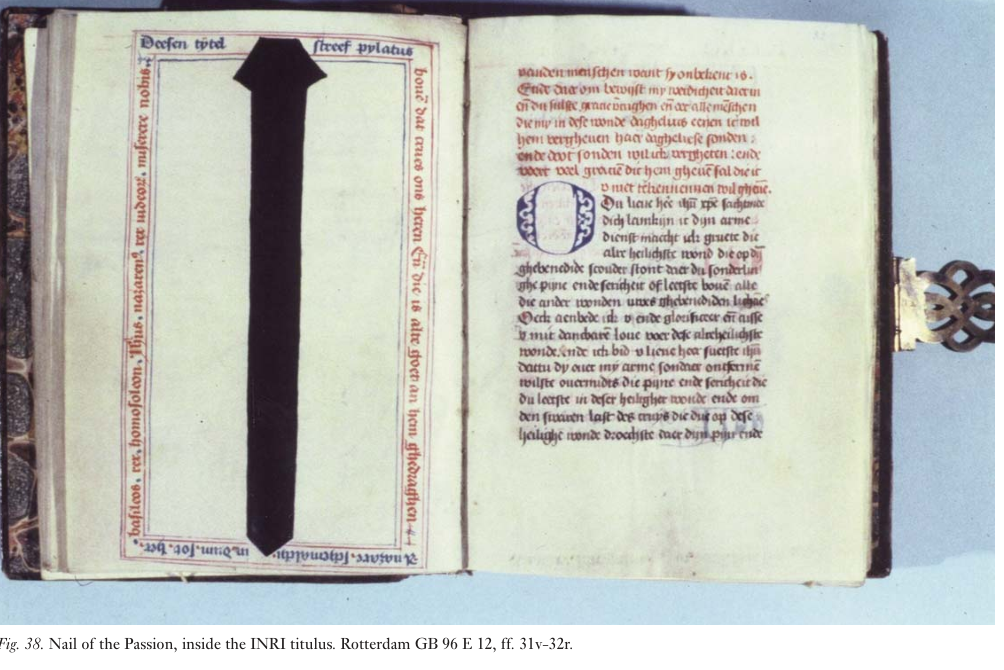
These included images painted on the roll of the wound of Christ and the nails of the Passion.
These are known as metric relics, in that “their very dimensions correspond to a prototype and thereby summon the power of their referents.”
